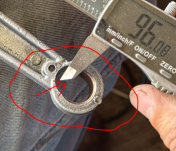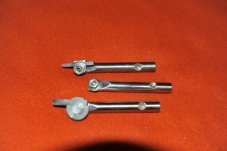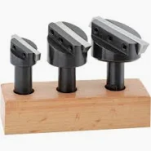Savedbygrace77
Aluminum
- Joined
- Jul 15, 2018
Hi there, I have a southbend 9 and a mini mill at home. I decided after 4 years to tear down my (italian!!) 80 gallon DevilBliss air compressor only to find the rod size is superbly whack - and totally messed up .. not worth dumping more $ into it i decided I will mig alu weld the piston and rod and re-machine them and hold thumbs  Yes I know I can get a whole head unit but this is for fun and hopefully it will last.
Yes I know I can get a whole head unit but this is for fun and hopefully it will last.
Either way, my mill has a drill chuck and R8 too, I was thinking of making a VERY simple HSS bit holder with a square groove to hold the bit and a set screw to maintain position- I would have to make a measurable side cut to get an est cut size with calipers.
Has anyone made something simple?
Here you can see how bad the rod is worn down (bushing is gone), piston has a light score that I will also be repairing and honing to a nice fit - I will be sourcing a cheap bushing somewhere and doing a final fit -

 Yes I know I can get a whole head unit but this is for fun and hopefully it will last.
Yes I know I can get a whole head unit but this is for fun and hopefully it will last.Either way, my mill has a drill chuck and R8 too, I was thinking of making a VERY simple HSS bit holder with a square groove to hold the bit and a set screw to maintain position- I would have to make a measurable side cut to get an est cut size with calipers.
Has anyone made something simple?
Here you can see how bad the rod is worn down (bushing is gone), piston has a light score that I will also be repairing and honing to a nice fit - I will be sourcing a cheap bushing somewhere and doing a final fit -






